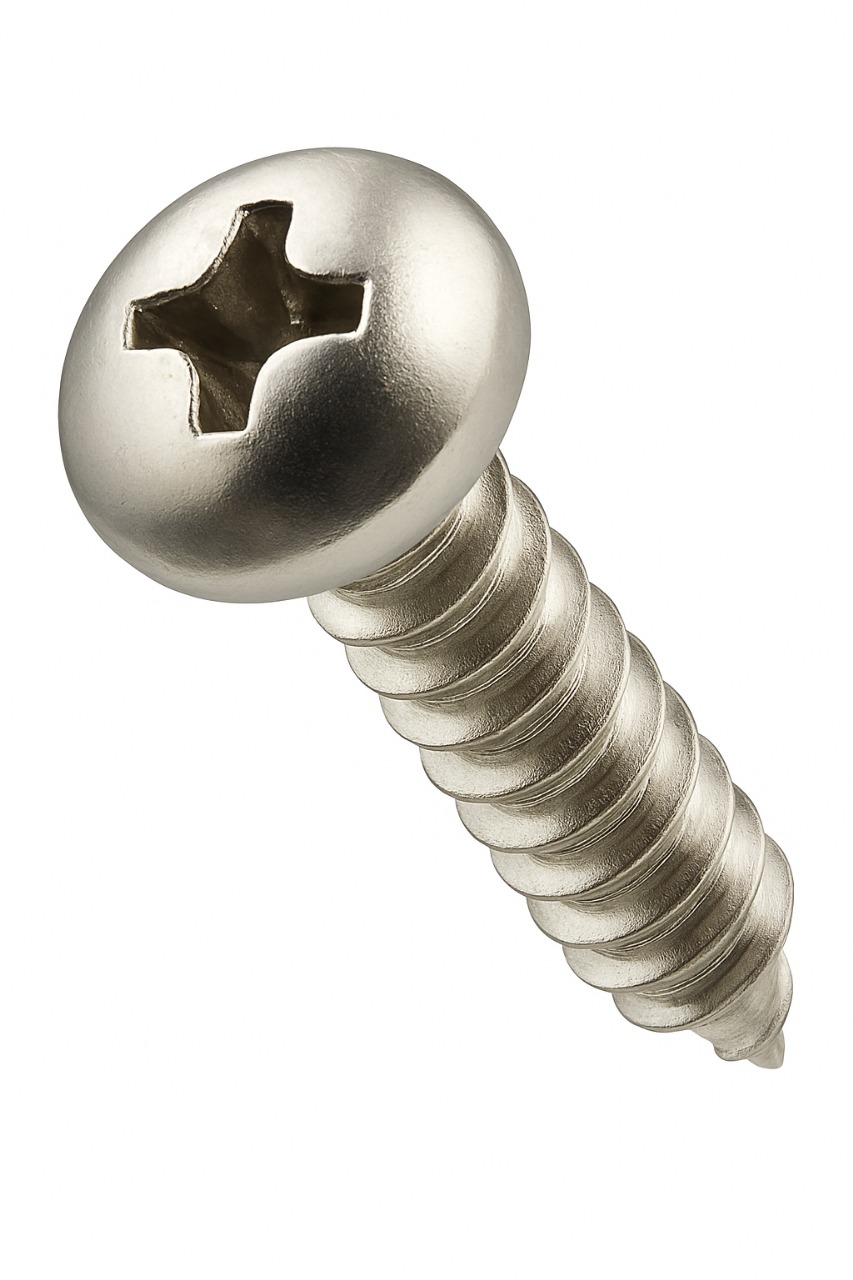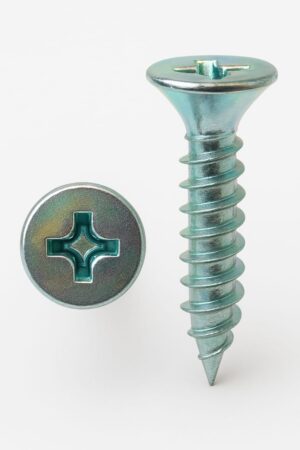Description
Phillips Self Tapping Screws are among the most versatile and widely used fasteners in a variety of industries, including construction, manufacturing, automotive, and DIY projects. Known for their distinctive cross-shaped recess and ability to create their own threads as they are driven into materials, these screws offer a unique combination of ease of use, efficiency, and strength.
Types of Phillips Self Tapping Screws
While all Phillips self-tapping screws share common features, they come in a variety of types tailored to specific applications:
-
Pan head: Features a flat top and rounded sides, providing a clean finish and excellent holding power.
-
Flat head (countersunk): Designed to sit flush with the material surface, commonly used in woodworking and cabinetry.
-
Truss head: Wider, low-profile head that offers increased bearing surface and is often used in sheet metal work.
-
Hex washer head: Combines the Phillips recess with a hexagonal outer shape for use with both screwdrivers and wrenches, providing versatility and torque.
Applications
Phillips self-tapping screws are used across diverse industries and projects, including:
-
Construction: Securing metal studs, attaching drywall to metal framing, or fastening roofing sheets.
-
Metal fabrication: Joining thin sheet metals without the need for pre-drilling.
-
Automotive: Attaching trim, panels, or brackets in vehicles.
-
Electronics and appliances: Fastening components in devices and machinery.
-
Woodworking and DIY projects: Offering a quick and reliable fastening solution for a wide range of home improvement tasks.
Pan Phillips Self Tapping Screws:
Pan Phillips self-tapping screws are a versatile and widely used type of fastener, recognized for their distinctive combination of a Pan head design and Phillips drive. These screws are commonly employed in a variety of industries, from construction and manufacturing to electronics and home improvement projects. Their unique shape and functionality make them ideal for fastening materials such as sheet metal, plastic, and wood.
Design Features of Pan Phillips Self-Tapping Screws
At their core, Pan Phillips self-tapping screws combine three key design elements:
1️⃣ Pan Head
The pan head is a rounded, slightly domed head with a flat bearing surface underneath. Unlike flat head screws (which sit flush) or oval head screws (which are partially countersunk), pan heads sit proud of the surface. The broad bearing surface helps distribute load over a wider area, reducing the risk of material deformation or damage, especially in thin materials like sheet metal. This makes pan heads an excellent choice when a flush finish is not required.
2️⃣ Phillips Drive
The Phillips drive features a cross-shaped recess designed to minimize cam-out (slippage) and allow for greater torque transfer. This design is compatible with both manual screwdrivers and powered drivers, making it ideal for applications where efficiency and precision are important. The Phillips system also helps center the driver bit automatically, ensuring better alignment and reducing user fatigue.
3️⃣ Self-Tapping Threads
The self-tapping feature enables the screw to cut its own threads into the material as it is driven in, eliminating the need for pre-tapping or nuts in many applications. This is achieved by sharp, angled threads and a pointed tip (typically Type A or AB). Some self-tapping screws also come with a self-drilling point, allowing them to drill their own pilot holes in metal and other hard materials.
CSK Phillips Self-Tapping Screws:
CSK Phillips self-tapping screws are a specialized type of fastener designed to provide a clean, flush finish while offering the convenience and efficiency of a self-tapping mechanism. Commonly used in woodworking, metal fabrication, and a wide range of industrial applications, these screws combine the benefits of a countersunk head, a Phillips drive, and self-tapping threads to create strong, precise, and visually appealing joints.
Design Features of CSK Phillips Self Tapping Screws
CSK Phillips self-tapping screws are defined by three primary characteristics:
1️⃣ CSK (Countersunk) Head
The CSK head—short for countersunk—features a conical shape that allows the screw to sit flush with the material surface when fully driven in. This design creates a smooth, even surface, which is especially important in applications where aesthetics, smooth finishes, or material stacking are priorities. The most common countersink angles are 82° (standard in the US) or 90° (common in Europe).
2️⃣ Phillips Drive
The Phillips drive features a cross-shaped recess in the screw head, designed for use with Phillips screwdrivers or power driver bits. This system offers better torque transfer than traditional slotted drives and reduces the risk of cam-out (slipping out of the recess), allowing for greater control during installation. The self-centering nature of the Phillips design is especially helpful when driving screws quickly and efficiently.
3️⃣ Self-Tapping Threads
The defining feature of self-tapping screws is their ability to create their own threads as they are driven into the material. The sharp threads and pointed tip (often a Type A or Type AB point) cut into the substrate—whether it’s metal, plastic, or wood—eliminating the need for pre-threaded holes or inserts. This saves time and labor, particularly in high-volume manufacturing or assembly operations.



Reviews
There are no reviews yet.